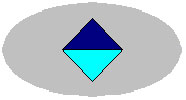
The Official 2/26 Battalion Website
In affiliation with the 2/26 Battalion Family & Friends Association Inc.
Shipping
The 2/26th Battalion left the Port of Melbourne on 1st August 1941, aboard the Marnix Van Sint Algdegonde, (known and loved by all as “The Marnix”). They were in convoy with her sister ship, “Johan Van Olden Barnevelt” and S. S. "Katoomba" among others.
Also on board the Marnix were :
- 2/26 Battalion 1st Reinforcements
- 2/29 Battalion and 1st Reinforcements
- Support Troops of Signals
- A.A.S.C.
- 2/10 Field Ambulance
- 22 R.A.A.F. Personnel
- 3 N.Z. Naval Personnel
“The Marnix Van Sint Algdegonde"
Builder
Nederlandsche
Scheepsbouw. Amsterdam - The Netherlands
Launched
August 1929
Completed
April 1930
Gross Tonnage
20314
Dimensions
609ft x 75ft (185m x 22.9m)
Power
Twin 20 cylinder diesels (14000 B.H.P.) Twin Screws
Service Speed
17 Knots
Crew
335
Passengers
First Class
383
Second Class 281
Third Class
64
This was later converted to 1,414 one class for migrants.
The “Marnix” and the “Johan” were launched and completed within
weeks of each other. They were the largest ships to be built in Holland
at that time. Both were designed for the lucrative trade with the Dutch
East Indies, and remained so until the outbreak of World War II,
September 1939.
When war broke out the Marnix was basking in the
tropical sunshine of Surabaya preparing for her homeward journey.
Although the Netherlands had declared itself a neutral state and was not
involved in the conflict at the time, the owners took the precaution of
ordering the captain to stay where he was.
However, when Germany
invaded Holland in May 1940, both ships were despatched to Great Britain
and handed over for use by the Allies as troop transports. They were
still manned by Dutch crews, but were placed under the control of
Britain’s Orient Line.
During November 1942, the “Marnix” while
trasporting 3,000 U.S. troops to the Algerian landings was attacked by
German dive bombers off the coast of North Africa and sunk.
The
“Johan” carried:
- 2/30 Battalion and 1st Reinforcements
- 2/12 Field Co. R.A.E. and 1st Reinforcements
- “L” Section 8 Division Signals
- Part of 2/10 Field Ambulance
- 1 Company A.A.S.C.
- 35 R.N.Z. Navy Personnel
The “S.S. Katoomba” carried:
- 2/15 Field Regiment R.A.A.
- 54 R.A.A.F. Personnel
- 2 R.N.Z. Navy Personnel
All personnel aboard the “Katoomba” were transferred to ‘M.P. Sibajak” at Freemantle, which joined U.S. 11B to Singapore.
“The Largs Bay” was the transport home
for the majority of the 2/26 Battalion. The Sister ships, “Espence Bay”
and “Moreton Bay” also carried members, as well as Hospital Ships such
as “Oranji”, “Circassius”, “Wanganella” and many others. Members whose
work Forces took them to Japan and other destinations were carried home
by “H. M. S. Speaker.”
"The Largs Bay"

Builder
William Beardmore
and Company. Dalmuir Glasgow Scotland
Completed
1921
Tonnage
14,362 Gross
Length
552ft (168.3m)
Width
68ft (20.8m)
Service
Speed 15 Knots
Propulsion
Geared Turbines / Twin Screws
The Largs
Bay was was one of five vessels (Moreton Bay, Hobsons Bay, Jervis Bay,
Largs Bay, and Esperence Bay) ordered by the Australian Government at
the end of WWI to cater for the Emigrant Trade. All five entered service
between December 1921 and September 1922, offering rather basic
accommodation for 723 passengers in one class.
The Commonwealth
Government Line was not well run, and suffered considerably from strikes
by seamen, so early in 1928 all five “Bay” vessels were sold to Lord
Kylsant, who controlled a major shipping empire. These five ships were
run as the Aberdeen and Commonwealth Line, with deep green hulls. Apart
from reducing the number of passengers to 635 the ships were not altered
at all and continued to serve Australia as before.
By 1931 the
Kylsant empire had collapsed, and in April 1933 the Aberdeen and
Commonwealth Line was jointly purchased by P&O, and Shaw Savill, the
latter being the majority shareholder and manager of the ships. During
1936, Esperence Bay was transferred to Shaw Savill and renamed Arawa,
and soon after the name of Hobsons Bay was changed to Esperence Bay. The
four remaining ships remained in service until September 1939, when
Moreton Bay, Esperence Bay and Jervis Bay were requisitioned and
converted into armed merchant cruisers. On 5 September 1940, Jervis Bay
was escorting a convoy of 38 fully laden merchant ships in the North
Atlantic, when they sighted the German pocket battleship “Admiral
Scheer”. Despite hopeless odds, Jervis Bay turned towards the enemy,
whilst the convoy scattered, but within an hour it had been battered to
a hulk and sunk. As a result of her sacrifice, all but six of the convoy
escaped destruction.

Largs Bay continued to operate in
Australian waters until August 1941, when she was converted into a
troopship. Also during 1941 both Moreton Bay and Esperence Bay were
converted into troopships.On 2 January 1944, Largs Bay was damaged by a
mine off Naples, and out of action for several months. All three
surviving “Bays” were released from Government service in 1947. They
were refitted for the Australian trade again, with accommodation for 514
tourist class passengers. By 1948 the trio were back in service for the
Aberdeen and Commonwealth Line, offering a two monthly schedule of
deprtures.
In April 1955, Esperence Bay, the former Hobsons Bay,
left London on her final voyage to Australia. On her return she was sold
to Shipbreaking Industries, arriving at their yards on 6 July 1955.
The Moreton Bay left London for her final voyage on 30 November 1956. On
her return to Britain she was sold to T.W. Ward of Barrow to be broken
up. She arrived there on 13th April 1957.
Largs Bay left London
on 11 January 1957 for her final voyage. Departing from Sydney of 27
April, and Melbourne three days later, she was sold to T.W. Ward of
Barrow on her return to Britain, and arrived there on 22 August 1957.


